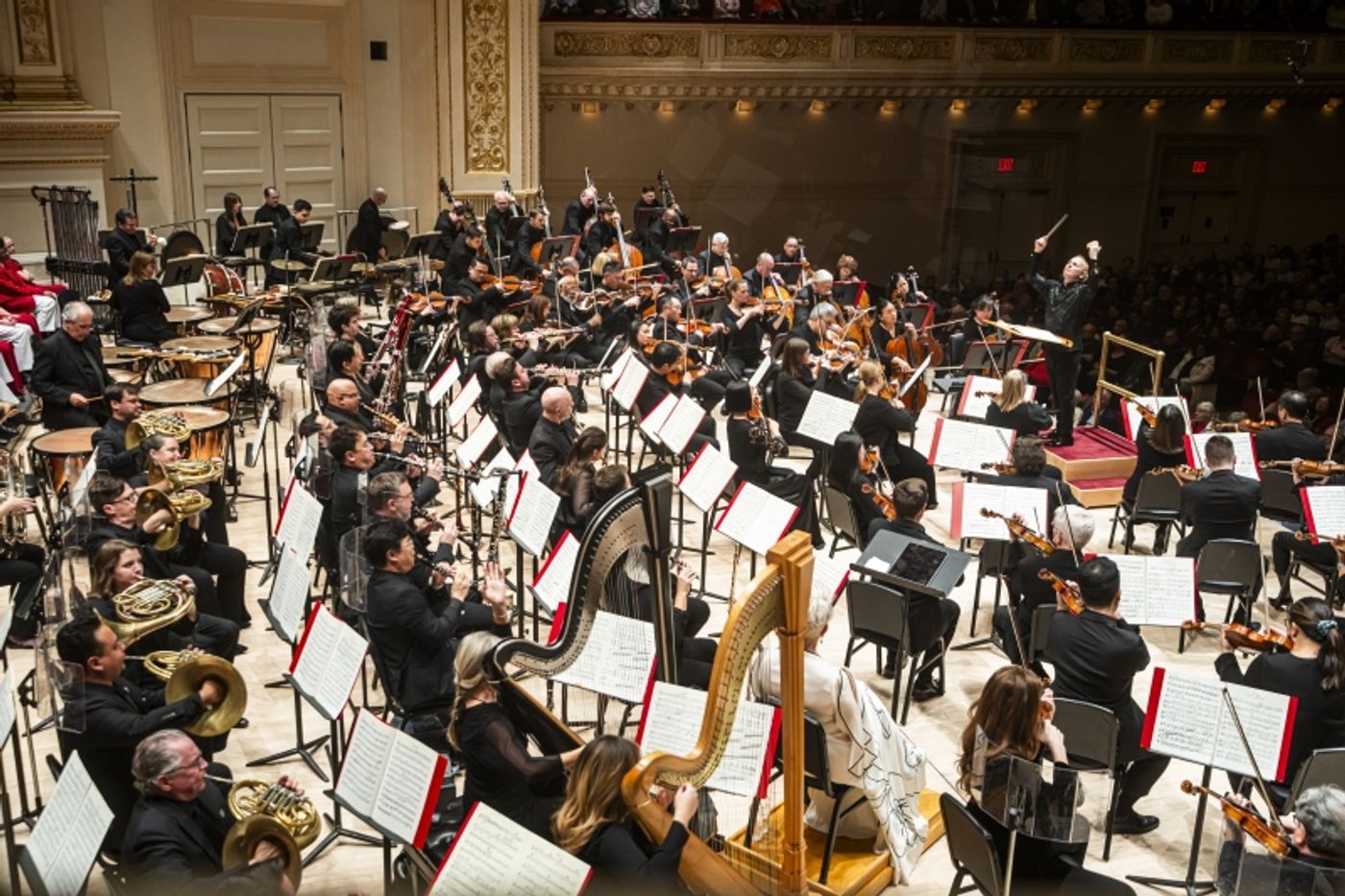Review: The Philadelphia Orchestra Delivers a Monumental Mahler 3 at Carnegie
The Philadelphia Orchestra performs Mahler's 3rd Symphony under Yannick Nezet Seguin.

The Philadelphia Orchestra’s performance of Mahler’s monumental Symphony No. 3 aCarnegie Hall on October 15th was an unforgettable evening of rich musical storytelling. Under the dynamic direction of Maestro Yannick Nézet-Séguin, the orchestra captured the emotional breadth and technical demands of this vast work. The night showcased both the grandeur and intimacy of Mahler’s vision, with some moments achieving sublime transcendence.

The first movement, "Kräftig. Entschieden," came charging out of the gate with an explosive energy that set the tone for the evening. It was marked by huge, stentorian brass that shook the building to its rafters as the work opened. This first movement, which can often feel unwieldy due to its length and complexity, was shaped with clarity by Nézet-Séguin, who kept the sprawling structure cohesive. The Philadelphia brass section deserves special praise for its authoritative power and precision, evoking the rugged grandeur of nature Mahler intended. Despite the intense brass passages, the movement never lost its underlying sense of forward momentum, and the dramatic contrasts between stormy outbursts and lyrical interludes were handled deftly.
The second movement, “Tempo di Menuetto,” provided a welcome contrast to the brashness of the first, with its graceful pastoral charm. Here, the woodwinds and strings shimmered, capturing the delicate Viennese dance rhythms. Nézet-Séguin drew a light, airy touch from the orchestra, offering a respite from the monumental opening while maintaining the emotional undertow that keeps this movement from being mere light entertainment. It was a moment of elegance, subtly tinged with nostalgia.
In the third movement, “Comodo. Scherzando,” the orchestra danced with a buoyant, playful energy. Mahler’s music here is full of animalistic whimsy and strange, otherworldly sounds, which the Philadelphia players brought to life with humor and precision. The offstage posthorn solo—a crucial moment in this movement—was hauntingly beautiful, its distant echoes floating through Carnegie Hall with an ethereal quality. The contrast between the playful scherzo and the posthorn’s melancholy strain was rendered with finesse, giving the movement both charm and emotional depth.
The fourth movement, “Sehr langsam. Misterioso,” featuring mezzo-soprano Joyce DiDonato, was unfortunately a bit of a missed opportunity. While DiDonato is a remarkable artist with a voice of great warmth and expressiveness, she seemed slightly underpowered in this performance. Her placement behind the orchestra, a decision by Nézet-Séguin, may have contributed to this, as her voice sometimes struggled to project through the thick orchestration. That said, her interpretation of the text from Nietzsche's Thus Spoke Zarathustra was beautifully phrased, and she brought a quiet intensity to the haunting poetry. The movement’s introspective mystery was well communicated, but the balance between singer and orchestra felt misjudged.
The children’s choir in the fifth movement, “Lustig im Tempo und keck im Ausdruck,” was nothing short of delightful. Their bright, clear voices added a sense of innocence and joy to Mahler’s setting of the folk poem "Es sungen drei Engel." Paired with the Women of the Westminster Symphonic Choir, the children delivered their lines with clarity and exuberance, lifting the movement into an almost heavenly realm. The playful energy of this movement, with its bursts of jubilant brass and glockenspiel, was infectious, and the interplay between the choir and the orchestra was seamless.
It was the final Adagio, however, that truly defined the evening. The sixth movement, marked “Langsam. Ruhevoll. Empfunden,” unfolded with a profound sense of stillness and serenity, gradually building to a transcendental climax. “Father, look at my wounds! Let no creature be lost!” wrote Mahler in the margin of his original markings for the final movement.
Nézet-Séguin’s pacing here was impeccable, allowing the music to breathe and expand organically. The Philadelphia strings were at their most luminous, creating an almost otherworldly glow that filled the hall. As the movement reached its emotional zenith, the sense of catharsis was palpable, and the audience responded with audible sobs—a testament to the sheer emotional power of the performance. The conclusion of the Adagio, with its quiet, radiant resolution, felt like a moment of deep spiritual peace.
The performance was a total triumph for the Philadelphia Orchestra as Nézet-Séguin’s interpretation brought out the grandeur, humor, and humanity of the work, and his orchestra played with a sense of total commitment and artistry. The evening was a reminder of why Mahler’s music continues to resonate so deeply with audiences, and why the Philadelphia Orchestra remains one of the world’s premier ensembles. The symphony’s final notes left the audience in stunned silence before a rapturous ovation, a fitting end to a deeply moving performance.
Photo: Chris Lee
Reader Reviews
Videos

